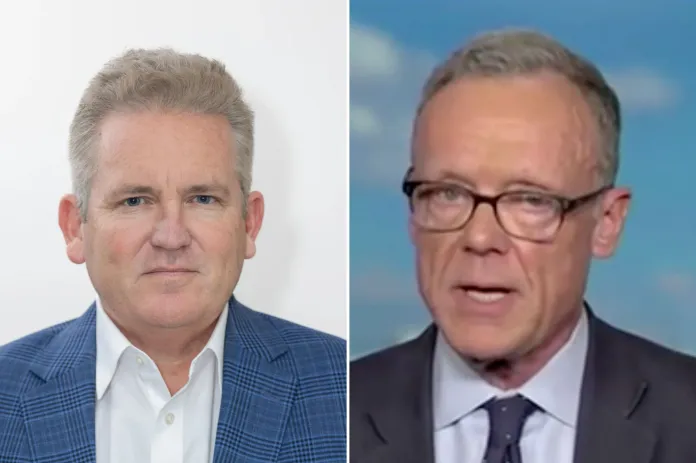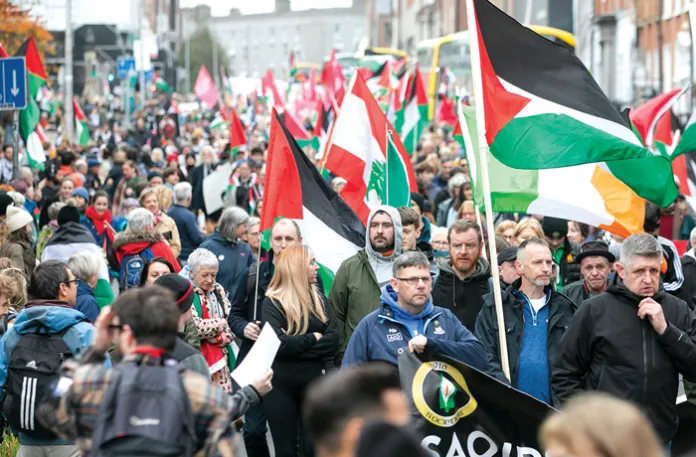‘Hezbollah must not be given a break’: Israel military signals it won’t let up on aerial attacks – Washington Examiner
In a recent escalation of military activity, Israeli forces have significantly intensified their aerial campaign against Hezbollah in Lebanon, aiming to counter the group’s ongoing attacks on Israel that have persisted for nearly a year. IDF chief of staff Lt. Gen. Herzi Halevi stated that “Hezbollah must not be given a break,” highlighting the urgency of continuing offensive operations. This week alone, Israel conducted numerous airstrikes, including lethal strikes in Beirut, which resulted in over 500 casualties—the deadliest day in Lebanon since the 2006 Israel-Hezbollah war.
Israeli military strategies focus on targeting Hezbollah’s weapon stockpiles, often located in civilian areas, while warning Lebanese citizens near military targets to evacuate. Tensions escalated after Hezbollah resumed cross-border attacks following Hamas’s October 7, 2023, terrorist assault on Israel, which led to significant Israeli civilian casualties. The situation remains complex, as Hezbollah refuses to halt its fire until Israel reaches a ceasefire with Hamas, complicating international efforts and calls for stability in the region.
Israeli responses have included high-profile assassinations of key Hezbollah leaders, aiming to disrupt the group’s operations further. Although ground invasion plans have not yet been executed, the ongoing hostilities indicate a precarious balance of power as both Israel and Hezbollah remain entrenched in their positions, with potential international mediation efforts being sought.
‘Hezbollah must not be given a break’: Israel military signals it won’t let up on aerial attacks
An Israeli military senior official said on Tuesday that the country’s aerial campaign in Lebanon targeting Hezbollah “will accelerate.”
The Israel Defense Forces significantly stepped up the number of airstrikes it is conducting into Lebanon this week as the military seeks to end Hezbollah’s continued attacks on Israel, which have occurred for nearly a year.
“Hezbollah must not be given a break,” IDF chief of staff Lt. Gen. Herzi Halevi said Tuesday. “[We must] keep working with all our might.”
On Tuesday, the IDF said it carried out what it described as “an targeted strike in Beirut” one day after the Israeli airstrikes killed more than 500 people and injured more than 1,800 others, marking the deadliest day in Lebanon since the 2006 Israel-Hezbollah war.
Israel’s strikes are primarily in the southern part of Lebanon, which is near the border between the two countries, though the country has carried out strikes in Beirut, as it did on Monday and Tuesday. The military has targeted Hezbollah’s weapons and weapon depots, even though they’re often in civilian areas. The Israelis have pointed to secondary explosions following their strikes to indicate that they hit weapons that subsequently detonated.
“We will accelerate the offensive operations today and bolster all the arrays. The situation requires continued intensive action on all fronts,” Halevi added.
Israeli officials urged Lebanese civilians living in the southern part of Lebanon near these military targets to leave and travel north.
Hezbollah and Israel’s 2006 war ended with a United Nations Security Council resolution that required Hezbollah to stay ahead of the Litani River, which is located roughly 18 miles from the Israel-Lebanon border. Hezbollah has not abided by that in the years since, and it has stationed weapons in that area as well.
Hezbollah began firing rockets, missiles, and drones into northern Israel a day after Hamas carried out its Oct. 7, 2023, terrorist attack that resulted in the killing of 1,200 people and the kidnapping of roughly 250 others. Due to concerns that Hezbollah could carry out a cross-border raid targeting the civilian population, as Hamas had, Israel evacuated more than 50,000 people from that northern area, and the cross-border aerial attacks have continued to prevent the return to their homes. Lebanon has also had to evacuate tens of thousands of civilians due to threats from Israeli strikes.
Israeli Ambassador to the U.N. Danny Danon said this week that Hezbollah has fired more than 8,000 rockets toward Israel since Oct. 8.
Hezbollah has refused to stop the cross-border attacks and said it wouldn’t do so until Israel agreed to a ceasefire deal with Hamas, but the United States has said that Hamas’s leader, Yahya Sinwar, is the “obstacle” to a deal. Sinwar’s stance would effectively require Israel to agree to his terms to get a ceasefire deal, which would secure the release of the remaining roughly 100 hostages who are being held in Gaza, to get Hezbollah to stop its attacks, and that would then allow those tens of thousands of civilians to return to the north. Such an agreement, if Sinwar got his version of the deal, could leave Hamas in power in Gaza.
Instead of capitulating to Sinwar and Hezbollah leader Hassan Nasrallah’s strategy, Israel has opted to use its military to push Hezbollah out of that area directly north of Israel’s border and effectively create a buffer zone between northern Israel and where Hezbollah would be located, effectively enforcing the U.N. resolution from nearly two decades ago.
Simultaneously, Israel’s military has also sought to decimate Hezbollah’s senior leaders.
Last week, Israel targeted and killed Ibrahim Aqil, the head of Hezbollah’s operations and the commander of its Radian Force, months after the Israeli military killed Fuad Shukr, the highest-ranking military commander in Hezbollah. Other senior Hezbollah leaders who have been killed by Israeli forces include Wissam al Tawil, Abu Hassan Samir, Taleb Sami Abdullah, and Mohammed Nasser.
Shukr, Israel said, was responsible for an airstrike in July that resulted in the deaths of a dozen teenagers in the Golan Heights.
Earlier this month, Israel is believed to have been responsible for a dramatic attack in which thousands of Hezbollah’s handheld communications devices detonated almost simultaneously in two sets of attacks occurring on consecutive days.
The Israelis targeted Hezbollah’s commander of the southern front, Ali Karaki, on Monday, though Nasrallah said he survived.
Israel has yet to conduct a ground invasion into southern Lebanon like it did in 2006, though there is a chance it could happen.
The U.S. and several Western countries are hoping to see Israel and Hezbollah simmer the tension and try to come to a deal diplomatically that would allow for the civilians on both sides to return to their homes. Officials within the Biden administration have repeatedly stated their belief that getting a ceasefire deal done between Israel and Hamas would allow for Israel’s conflict with Hezbollah to simmer as well.
But a ceasefire deal between Israel and Hamas is seemingly further away than it has been for several months.
In mid-July, U.S. Secretary of State Antony Blinken said the ceasefire talks were “inside the 10-yard line,” and he said two weeks ago that “nearly 90%” of the Gaza ceasefire deal is agreed” upon.
U.S. National Security Council spokesman John Kirby acknowledged over the weekend that “I would say that we are not achieving any progress here in the last week to two weeks.”
" Conservative News Daily does not always share or support the views and opinions expressed here; they are just those of the writer."




